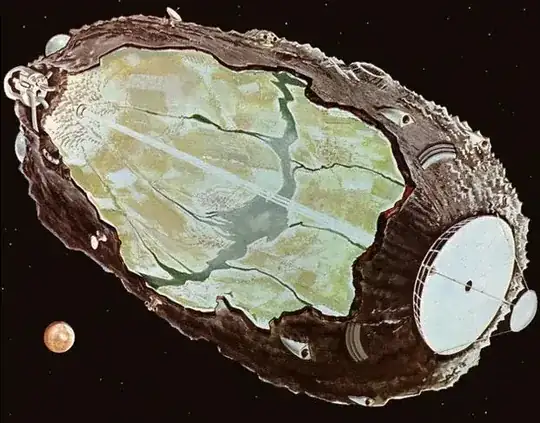I'm talking about something like this, for comparison's sake:
How would artificial gravity generated by centrifugal force affect the people living aboard such a ship? Let's assume that the central shaft and the asteroid itself rotate independently of each other, with the central shaft (a residential tower of sorts) rotating either clockwise or counterclockwise while the asteroid (and thus the verdant pastures on the inside of the "shell" used for farming and agriculture) rotates the opposite direction. With those assumptions out of the way, here are a few questions.
(1) How fast would the central shaft and the asteroid each have to rotate to generate the equivalent of 1g? For the sake of this example, let's say the shaft is somewhere between 500m and 1km thick and the asteroid is 10-15km in diameter.
(2) Would people growing up in a constant 1g of artificial gravity experience any of the usual effects of prolonged space travel on the human body, such as decreased bone density, muscle loss, an increase in height etc.?
(3) If you lived on the surface of the residential tower, what direction would "down" be oriented in? Could you stand "up" perpendicular to the tower and walk down it like a Sunday stroll down Main Street, or would the artificial gravity instead hold you parallel to the tower like a rock climber or a caterpillar climbing up a tree? What direction would fluids and other solids be drawn in?
(4) If you fired a bullet, pitched a fastball, or tossed your drink brimming with Viking rage, how would they behave the farther they traveled from the tower? I assume a bullet wouldn't be meaningfully hindered by the tower's rotation and would continue traveling until it hit the wall of the asteroid, but what about objects thrown or launched with less speed? How far would you have to go from the tower to be completely free of the artificial gravity?
This would really help me understand what daily life inside such a structure would be like (I'll have questions regarding thrusters at some later date).

